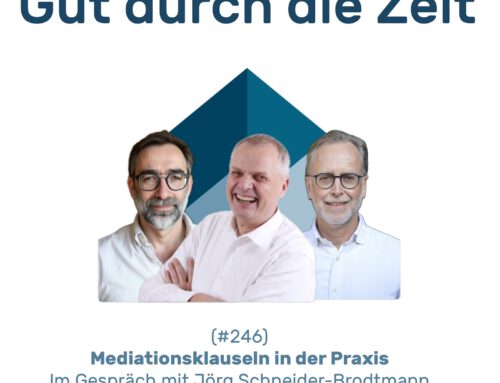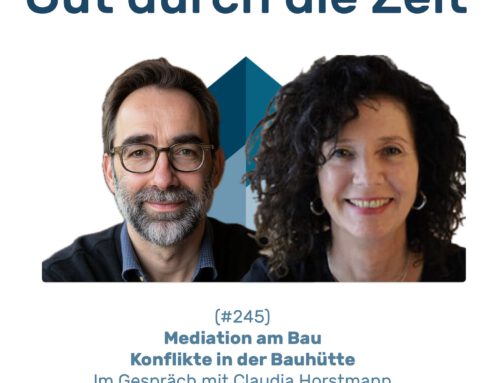INKOVEMA Podcast „Well through time“
#107 – Obtain feedback
Leading difficult conversations IV - A communicative tool for self-management. In conversation with Rolf Balling
Well through time. The podcast about mediation, conflict coaching and organisational consulting.
Rolf Balling, Diplom-Kaufmann (University of Cologne) with a specialisation in social psychology, 7 years in management functions (marketing/controlling) at Alcatel-SEL AG, thereafter 10 years as head of the management training and organisational development department, Training in TA up to teaching transaction analysts in the field of organisation (12 years on the job), training in Group dynamics (2 years extra-occupational), training in Systemic counselling (7 years part-time), From 1990 to 2002 Structure of PROFESSIO GmbHAcademy in the field of human resources, as a teaching trainer and managing partner.
Contents:
Ways to get feedback
- Personal survey (customer survey)
- Written survey (e.g. questionnaire)
- Online rating portals
- Online feedback tools
- Social networks
- Feedback via chats, contact forms or comment fields
- Mobile app
"Feedback" comes from the English and means feedback. It was originally a **technical term** and became relevant in the context of cybernetics (Norbert Wiener). Cybernetics is about the control of systems. Feedback provides an information-processing system with information that leads to – more or less – specific or determinable change (regulation).
The Social sciences In the course of developing various systems theories, they have applied this concept to people and groups of people, and to social systems in general.
Of course, this has **light and dark sides**. On the one hand, people are provided with information that allows them to behave (more) appropriately in a group. On the other hand, this information also leads to a certain social pressure to utilise the information – also in accordance with the expectations of the feedback providers. Although this can be agreed differently in terms of communication and contract, there is still a tendency to adapt to each other.
Nevertheless, it is a communication process in which all(!) participants not only receive information, but also disclose it.
"What Peter says about Paul always says something about Peter as well." “
Not only the feedback recipient, but also the feedback giver makes a statement about themselves. Feedback therefore never takes the tone of "You are so and so...!", but rather "I perceive your behaviour in such and such a way..."
This is why there are always preliminary and follow-up questions for both sides:
– Why do I perceive you like this?
– What do you trigger in me?
– What does this have to do with?
– How do I know myself in this area?
– What values or guiding principles of my life might be affected here?
The feedback recipient might ask himself:
– What does your message tell me?
– Do I recognise myself in your message? Do I recognise my parts?
– Does your statement resonate with me?
– How do I experience myself in this area and in relation to you?
Feedback in a group
- Positive feedback from the other team members (What is going well – please keep it up?)
- Critical feedback (What is not going well – please change, if possible?)
- Wishes and suggestions for further cooperation (tips)
- Summary and commentary by the feedback recipient (conclusion)
Ways to get feedback
- Personal survey (customer survey)
- Written survey (e.g. questionnaire)
- Online rating portals
- Online feedback tools
- Social networks
- Feedback via chats, contact forms or comment fields
- Mobile app
Methods for seminar feedback
- Handout Feedback questionnaire at the end of the seminar (anonymous!)
- Online feedback form for seminar evaluation (www.easyfeedback.com)
- Feedback round (in familiar groups)
- One-point question (e.g. 1-10 not-good-good scale, How did you like the seminar?)
- Coordinate system query (e.g. x-axis: interesting in terms of content; y-axis: formally varied)
- Detailed evaluation using a flipchart/metaplan and post-its (e.g. What did I like? What didn't I like?)
- Five-finger method
- Each of the five fingers stands for a specific feedback statement:
- Thumb: I really liked that!
- Index finger: You can do better than that!
- Middle finger: I didn't like that at all!
- Ring finger: I'll take that with me!
- Little finger: That was too short!
- Each of the five fingers stands for a specific feedback statement:




Leave A Comment